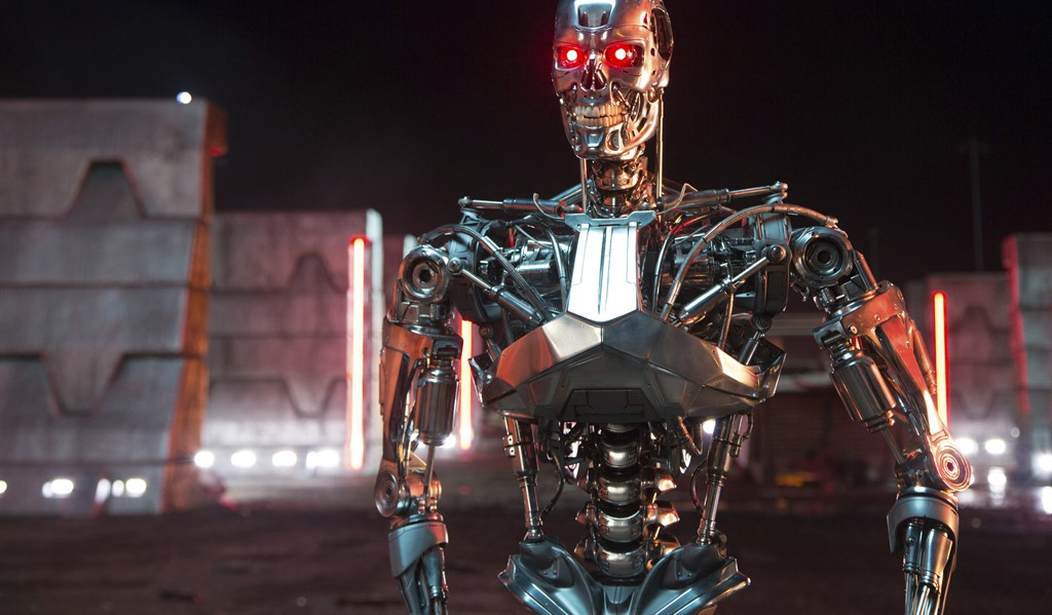I’m a science fiction nerd at heart. I’ve been one ever since my uncle took me to see the original Star Wars during its original run–yes, I’m dating myself here. I was blown away and I’ve been a fan ever since and even wrote some sci-fi myself.
One of the staples of science fiction is the idea of our creations turning against us. From Frankenstein to The Matrix and well beyond, the idea of the things we made turning on us serves as a lesson on the dangers of hubris.
But killer robots aren’t just about human arrogance. It seems some think such things can change the nature of the debate over our Second Amendment rights.
The US 2nd Amendment right to keep and bear arms was added to the Constitution in 1791. In the two centuries since, firearm technology has changed significantly. But the 2nd Amendment hasn’t.
In 1791, for example, US citizens were given the right to carry a single-shot firearm or sword in public. Because, well, that’s all there was. In 2021, however, there exists a vast array of weaponry ranging from easily-concealed handguns to assault rifles capable of firing hundreds of rounds per minute with uncanny accuracy.
It’s so-far proven pointless to debate whether the US founders would have viewed the right to bear arms differently if they’d been aware of semi-automatic weapons such as the Glock 21 or Colt AR-15.
But the advent of deep learning AI technology combined with the stalwart, unwavering nature of US courts when it comes to defending the 2nd Amendment presents some interesting new wrinkles to the conversation.
Oh, does it?
I’m not so sure, but the author does go on to make a case.
In 2018, a Syrian man built this dead-simple autonomous sentry gun:
The system features a universal rifle mount, a trigger-pulling mechanism, and a base that rotates 360-degrees to track targets using heat signatures. It’s completely controlled via laptop and, presumably, could work with any number of simple artificial intelligence systems to track, tag, and eliminate targets.
In the military context, it’s easy to imagine these seeing heavy-use in defense of forward bases or along strategic choke points.
Traditionally, similar technology has been banned for civilian use. It’s illegal to set up “spring guns” in defense of property in the US.
In fact, it’s generally illegal in the US to set up any form of active “trap” capable of killing a human indiscriminately. You can protect your property with electrified fences topped with razor wire, but you can’t legally use tripwires attached to shotguns to defend your home or business.
There is a huge leap, however, between a tripwire connected to a shotgun’s trigger and an AI system that can determine whether a stranger approaching the property is a mail carrier, a police officer, or an unwanted intruder.
Except that use of force is, in most jurisdictions, only justified in protecting human life. Using a trap, even one powered by AI, to protect anything other than human life becomes an unjustified use of force.
But setting something up like this to protect your home while you sleep might be another matter. In that case, a killer robot might just be what you need.
Now, I’m going to give the author credit for one thing. While I figure he leans on the anti-gun side of the argument, this piece is really more of a thought exercise. Would the Second Amendment cover such advanced technology and would the courts recognize it as doing so?
Obviously, there will be factions who oppose an autonomous weapon system guarding a house, even in jurisdictions where force can be used to protect property. I expect law enforcement would be chief among them.
As for my take, I actually think the Second Amendment should cover pretty much any weapon system out there. If I want to buy a fully-operational tank, I should be free to do so. Yes, it may be ridiculous and never be useful in any way, but if I’ve got the money, the law shouldn’t stop me.
If I believe that, why wouldn’t I support the author’s hypothetical “defense drone,” a “killer” robot that follows you around and doesn’t do anything until you’re threatened?
The Second Amendment doesn’t just cover single-shot muskets or swords. Even when it was written it covered more than that. It also covered things like the Puckle gun and heavy artillery on private ships.
What the amendment protects is the right to keep and bear arms. It doesn’t specify them because the Founding Fathers weren’t stupid. They knew technology would advance in directions beyond their imaginations and they were prepared for that, so yeah, an AI-powered gun turret or a defense drone would certainly be covered.
The thing is, what’s not covered and never would be covered is the irresponsible use of that technology. All the scary scenarios we hear? Those are all the result of people misusing weapons. Why would a so-called killer robot be any different?
Of course, none of this pertains to AI as we think of it thanks to all those science fiction movies. True AI presents its own nightmare scenarios, but none of those are the fault of the Second Amendment either.








Join the conversation as a VIP Member